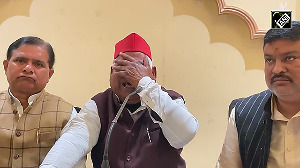No more pushing of files with a focus on the process orientation in the government offices. Prime Minister Manmohan Singh wants bureaucrats to show results under a performance monitoring and evaluation system (PMES) he is pushing for since 2009.
Such a document helps the government in making an objective and fair evaluation of the organisation's overall performance at the end of the year, officials said. All departments have been asked to submit these RFDs latest by March 5 this year.
After six months, the results framework and actual achievements against the performance goals laid down at the beginning of the year will be reviewed and the RFD's goals may be reset, taking into account the priorities by factoring in unforeseen circumstances.
At the end of the year, an evaluation will be carried out on the progress made against the agreed results in RFDs. The offices are supposed to submit the evaluation report to their respective ministries on May 1, 2013, and then make it public on their websites to let the people judge their performance.
Officials said the beauty of RFDs is that they not only contain the agreed objectives, policies, programmes and projects, but also success indicators and targets to measure progress in implementing them. To ensure the successful implementation of agreed actions, the prime minister has advised that the government offices should have a necessary operational autonomy.
The RFD reflects three basic questions:
What are organisation's main objectives for the year?;
What actions are proposed to achieve these objectives?; and
How would someone know at the end of the year the degree of progress made in implementing these actions?
As such, it is divided into five sections that include the organisation's long-term vision, objectives and functions, inter se priorities among key objectives, success indicators and targets, detailed definition of the success indicators and methodology for their measurement, and specific performance required from other organisations that is critical for delivering the agreed results.
As envisaged under the system, the vision is a long-term generic and grand statement that does not change from year to year unless the organisation is dramatically restructured and is expected to undertake very different tasks in the future.
The circular says the vision should never carry the 'how' part of vision. For example 'to be the most admired brand in aviation industry' is a fine vision statement, which can be spoiled by extending it to 'to be the most admired brand in the aviation industry by providing world-class in-flight services.' The reason for not including 'how' is that it may keep on changing with time, states the circular.
It points out the necessity to make the employees adopt the vision in sincerity. "Many a time, terms like vision, mission and strategy become more a subject of scorn than being looked up-to. This is primarily because leaders may not be able to make a connection between the vision/mission and people's everyday work. Too often, employees see a gap between the vision, mission and their goals and priorities. Even if there is a valid/tactical reason for this mismatch, it is not explained," the circular notes.
As such, the circular stresses that the leadership of the organisation "should consult a wide cross section and come up with a vision that can be owned by the employees of the organisation." It also notes that the vision should have a time span of 5-10 years. If less, it becomes tactical. And, if it is for 20 or more years, it becomes difficult for the strategy to relate to the vision.
It also lays down that the RFD to be prepared by the organisation must specify one or more success indicators or key performance indicators and cover both qualitative and quantitative aspects of the organisation to enable evaluation of progress of the policies, programmes, schemes and projects.
"Sometimes more than one success indicator may be required to tell the entire story. Success indicators are important management tools for driving improvements in organisation performance. They should represent the main business of the organisation and should also aid accountability. If there are multiple actions associated with an objective, the weight assigned to a particular objective should be spread across the relevant success indicators," the circular added.
Click here to read the 'Guidelines for designing Results-Framework Document'







 © 2025
© 2025